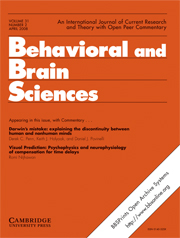Nazim Keven and Kathleen Akins’ target article ‘Neonatal Imitation in Context‘ in the journal ‘Behavioral and Brain Sciences’ is now in print.
 Abstract: Over 35 years ago, Meltzoff and Moore (1977) published their famous article ‘Imitation of facial and manual gestures by human neonates’. Their central conclusion, that neonates can imitate, was and continues to be controversial. Here we focus on an often neglected aspect of this debate, namely on neonatal spontaneous behaviors themselves. We present a case study of a paradigmatic orofacial ‘gesture’, namely tongue protrusion and retraction (TP/R). Against the background of new research on mammalian aerodigestive development, we ask: How does the human aerodigestive system develop and what role does TP/R play in the neonate’s emerging system of aerodigestion? We show that mammalian aerodigestion develops in two phases: (1) from the onset of isolated orofacial movements in utero to the post-natal mastery of suckling at 4 months after birth, and; (2) thereafter, from preparation to the mastery of mastication and deglutition of solid foods. Like other orofacial stereotypies, TP/R emerges in the first phase and vanishes prior to the second. Based upon recent advances in activity-driven early neural development, we suggest a sequence of three developmental events in which TP/R might participate: the acquisition of tongue control, the integration of the central pattern generator for TP/R with other aerodigestive CPGs, and the formation of connections within the cortical maps of S1 and M1. If correct, orofacial stereotypies are crucial to the maturation of aerodigestion in the neonatal period but also unlikely to co-occur with imitative behavior.
Abstract: Over 35 years ago, Meltzoff and Moore (1977) published their famous article ‘Imitation of facial and manual gestures by human neonates’. Their central conclusion, that neonates can imitate, was and continues to be controversial. Here we focus on an often neglected aspect of this debate, namely on neonatal spontaneous behaviors themselves. We present a case study of a paradigmatic orofacial ‘gesture’, namely tongue protrusion and retraction (TP/R). Against the background of new research on mammalian aerodigestive development, we ask: How does the human aerodigestive system develop and what role does TP/R play in the neonate’s emerging system of aerodigestion? We show that mammalian aerodigestion develops in two phases: (1) from the onset of isolated orofacial movements in utero to the post-natal mastery of suckling at 4 months after birth, and; (2) thereafter, from preparation to the mastery of mastication and deglutition of solid foods. Like other orofacial stereotypies, TP/R emerges in the first phase and vanishes prior to the second. Based upon recent advances in activity-driven early neural development, we suggest a sequence of three developmental events in which TP/R might participate: the acquisition of tongue control, the integration of the central pattern generator for TP/R with other aerodigestive CPGs, and the formation of connections within the cortical maps of S1 and M1. If correct, orofacial stereotypies are crucial to the maturation of aerodigestion in the neonatal period but also unlikely to co-occur with imitative behavior.
You can download the paper here. Journal tweet here.
